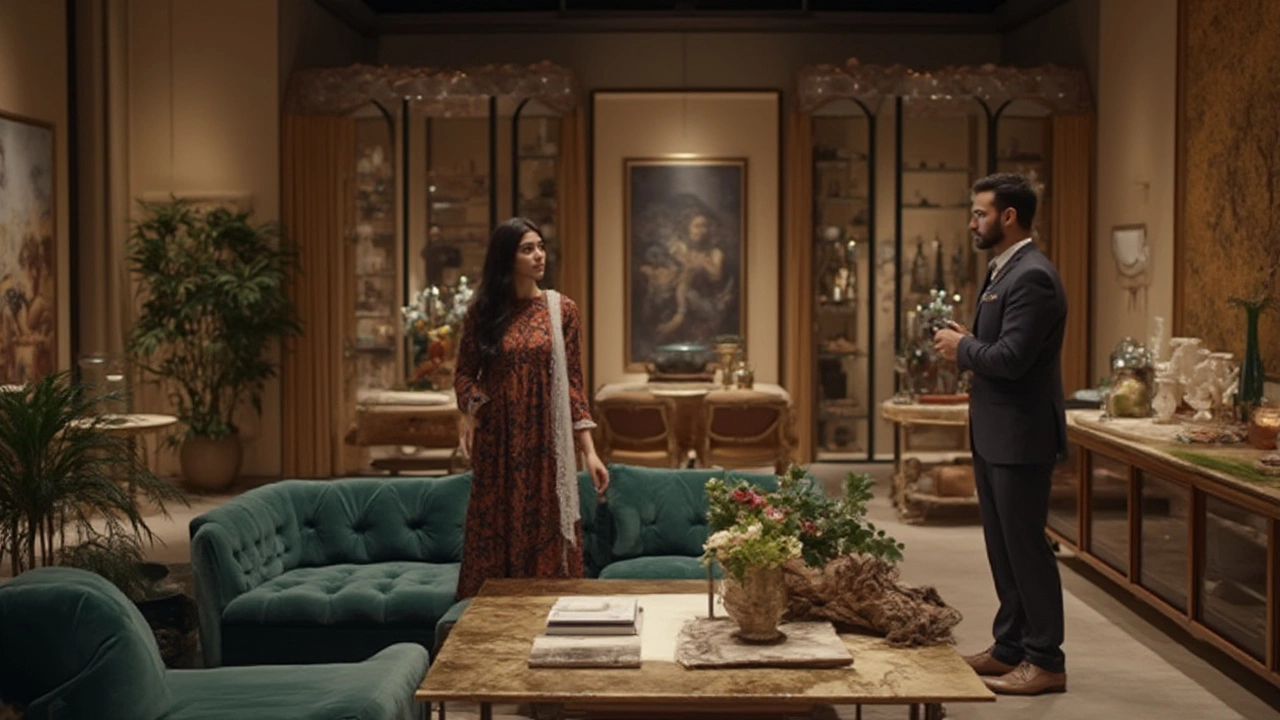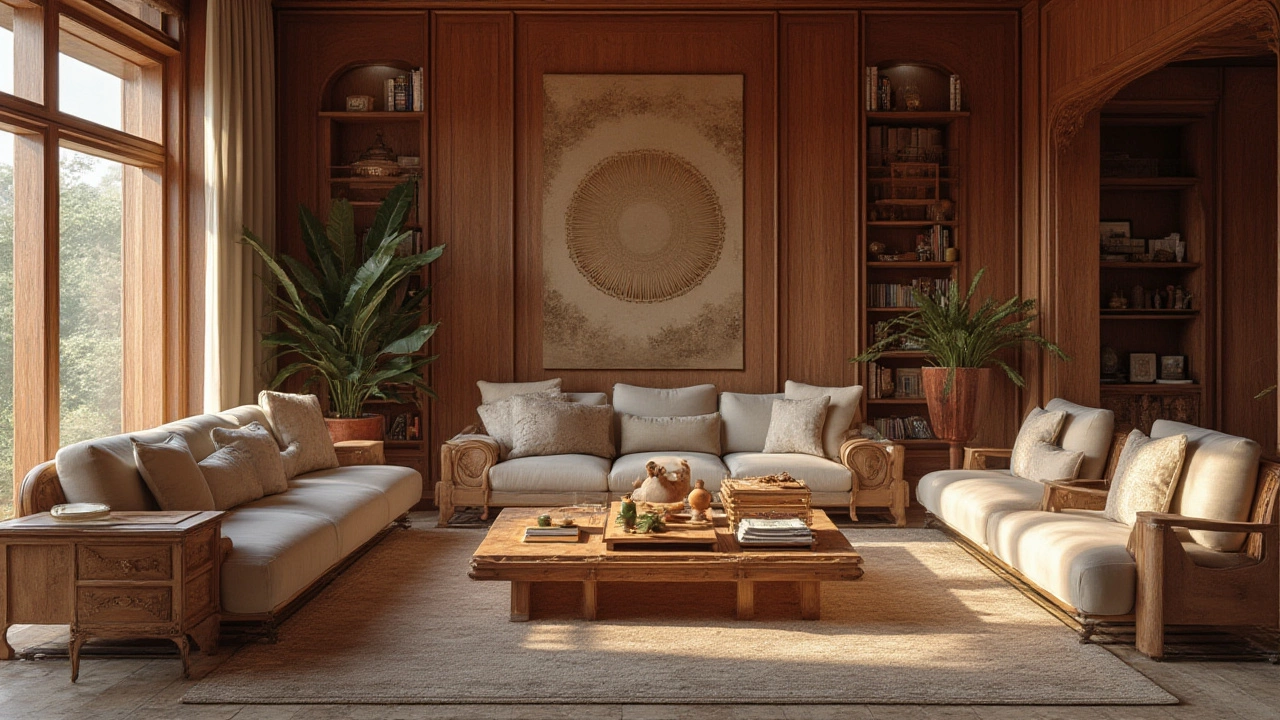You know you’re looking at high-end furniture when the grain on the table is almost hypnotic, the finish feels like silk, and there’s a price tag that could make you sweat. It’s more than just a place to park your coffee mug—a luxury sofa or bespoke table pulls you in, begging for a closer look. Some folks buy these pieces as investments, others for their statement value, but whatever your reason, high-end furniture isn’t just about a label. It’s about how it’s made and what it stands for. So, what exactly sets these high-end furniture makers apart? More importantly, why are people ready to wait months (and shell out a small fortune) for a sideboard? Let’s peel back the curtain on what goes into making these coveted pieces, who does it best, and what you should know before chasing that next shiny catalogue dream.
Defining High-End Furniture: Beyond the Name Tag
Forget bland catalog copies and mass-produced designs. High-end furniture is all about details—hand-cut joinery, grain-matched veneers, custom finishes, and knock-out hardware. These are the touches that never make it onto the cheaper lines. Just for comparison, let’s put it into numbers. According to the British Furniture Manufacturers association, handcrafted luxury furniture pieces make up just about 5% of all UK furniture sales, but they rake in nearly 25% of the industry’s total value. That says plenty about how much people are willing to invest in top-drawer quality.
If you trace the origins of any luxury piece, you’ll find a story. Whether it’s an English cabinetmaker painstakingly copying a Georgian original, or an Italian family firm reimagining Art Deco for a penthouse in Dubai, the roots of high-end furniture lie in heritage and mad skills. Brands like Poltrona Frau (Italy), Roche Bobois (France), and Baker (USA) have preserved some techniques for generations. In England, names like David Linley and Silverlining are whispered in designer circles for their jaw-dropping marquetry and modern twists on classic forms. It’s pretty common for commissions to take anywhere from three to nine months. Some bespoke jobs? They’ll take up to a year or more.
What really cranks up the price—and the value—is the quality of materials. We’re talking black walnut, figured maple, African wenge, or even leather tanned using old-school vegetable methods. Take, for example, the popular Eames Lounge Chair by Herman Miller, which uses seven layers of veneer to get that famous curve, each inspected by hand. The finishing isn’t just about looks, either. It’s about making a chair withstand decades of use and stay gorgeous while doing it.
High-end makers also rarely cut corners with the stuff you don’t see. Screws and fittings are often hidden, using old joinery routines—think dovetails and mortise-and-tenon joints. Ask a regular furniture worker from Birmingham’s Jewellery Quarter, and they’ll tell you how top workshops use traditional glues because they age better with wood. Sometimes, the internal frame is what determines whether an armchair will sag in ten years or hold up for generations. With mass-market brands, you’re lucky if the insides aren’t just stapled plywood and particleboard.
Tech and design trends do matter, but most luxury brands move slower—they’re not trying to jump on viral fads. There’s a reason pieces by Minotti or Knoll seem timeless: they stick to principles learned over a century of making. Some ultra-high-end houses go so far as to grow and season their own timber, cutting it only when the humidity is just right to prevent warping over decades. Owning a piece with that kind of backstory feels different. It should.
Legends and Innovators: Who are the Icons in Luxury Furniture?
The world of high-end furniture is full of big names, and each brings a flavor that’s almost impossible to copy. Let’s kick things off with the titans. Poltrona Frau, for instance, has been part of Italy’s luxury scene since 1912—its armchairs have graced everything from Ferrari interiors to private jets. Meanwhile, the sleek silhouettes of Flexform and Minotti keep Milan’s rich and famous comfy in their glass-walled apartments.
France leans decorative, with Roche Bobois reinventing classic forms with wild colors and unexpected shapes. Some of their collaborations, like Jean Paul Gaultier’s tattoo-inspired sofas, go full avant-garde. In the UK, bespoke is king. Names like Tom Faulkner or Benchmark Furniture bring British oak and ash to new life with obsessive attention to finish. Linley, founded by David Linley (the late Queen’s nephew), is practically a byword for British luxury—one-off commissions range from Art Deco cabinets to entire libraries, each telling its own story. Silverlining (Chester) stands out for wild technical trickery—think carbon fibre blended with rare woods, or intricate mosaic inlays that take months to assemble.
America doesn’t lag behind. Baker Furniture is known for its dedication to hand-carved, heirloom-quality pieces and for working with big design names like Barbara Barry and Thomas Pheasant. In New York, Ralph Lauren Home rivals the best European brands, with mahogany desks and leather trunks offering both ruggedness and glamour. Not to forget, Herman Miller and Knoll have turned mid-century modern into the last word in understated cool. That Eames Lounge Chair? It’s still being made the same way it was in 1956, and mint-condition originals sell at auction for more than some cars.
Japan’s contribution is quietly stunning. Firms like Conde House and Maruni Shokai make use of native woods like Japanese oak and cherry, along with age-old joinery techniques—no nails, just perfectly fitted joints. In India, godowns in Jaipur or workshops in Mumbai now push the limits on inlay and hand-carving, especially for custom projects headed abroad. Even newer cities—Shanghai, Dubai—are attracting emerging studios blending tradition and tech through 3D-printed details or smart-home automation, but still guided by the hand and eye of a master furniture maker.
Collaboration is massive at the top end. Bentu (China) teams up with material scientists to use recycled concrete in stand-out dining tables. French atelier Maison Sarah Lavoine is famous for pulling in local artists to create limited edition runs where every piece is numbered and signed. This creates “functional art”—imagine having a conversation piece in your living room that’s not just for show, but built to last 100 years.
You won’t spot these brands in chain stores. Instead, you’ll find them in design showrooms in London’s Chelsea Harbour or Paris’s Saint-Germain, with private consultations and made-to-order services. For some, there’s even a waiting list—owning a Silverlining sideboard is about as close as you’ll get to joining a secret club. Their latest cabinet might use a dozen different woods and metals, each sourced ethically and tracked via blockchain for bragging rights at dinner parties.
| Brand | Country | Signature Styles | Wait Time | Notable Piece |
|---|---|---|---|---|
| Poltrona Frau | Italy | Leather upholstery, classic-modern | 8-12 months | Chesterfield Armchair |
| Roche Bobois | France | Colourful, avant-garde | 2-4 months | Mah Jong Sofa |
| David Linley | UK | Exquisite marquetry | 12+ months (bespoke) | Map Room Table |
| Baker | USA | Classic, carved wood | 6-9 months | Barbara Barry Lounge Chair |
| Herman Miller | USA | Modern classics | 1-3 months | Eames Lounge Chair |
So, what’s the tip for hunting true high-end? Don’t just look for a famous designer’s name—ask about materials, finishing methods, joinery, and whether they’ll let you tweak dimensions or fabrics. If they say yes, you’re in proper bespoke territory.

Tips for Buying, Caring for, and Spotting Real Luxury Furniture
Bagging a piece from a top high-end furniture makers brand isn’t just going fancy—it’s a lesson in patience and research. First rule: check the label, but don’t stop there. Dig into the “how.” Is there a certificate of authenticity? Most genuine luxury manufacturers offer documents with build dates, materials used, and often a craftsman’s signature. Insist on seeing this. Fake “designer” furniture floods the market, especially online, so a little paper trail goes a long way.
Don’t settle for showroom glitz. Ask to see behind the scenes. Some workshops, including Silverlining in Chester and Tom Faulkner in London, run occasional open studios. Seeing a bench with half-completed dovetails or a veneer artist at work tells you way more than studio-lit product photos. If you’re buying from afar, video calls with the makers aren’t uncommon—and a digital walk-around of your future table goes a long way to build confidence.
Materials can make or break the deal. Oak and walnut are the showstoppers in the UK, but beware cheap veneers over plywood. Tap the underside—if it’s hollow or sounds thin, walk away. Leather should be full-grain (not “bonded” or “corrected-grade”), and fabric should be high-rub-count for durability. If the company’s shy about revealing sources, that’s a red flag.
Maintenance matters if you want your investment to last. Wood pieces need regular dusting with a soft, dry cloth (never a wet wipe!) and occasional waxing. Direct sunlight can fade finishes, even on expensive pieces, so twist the curtains or rotate your table every season. For leather, stick to pH-neutral cream every few months—avoid supermarket polishes. If you’re investing in something upholstered, check if covers are removable or if the brand offers cleaning services. Many premium makers do.
If resale matters to you, try to get on the waiting list for “iconic” pieces—those that regularly hold or gain value at auction. Some models, like the original Eames Lounge or Roche Bobois’ Mah Jong Sofa, haven’t just kept their price—they’ve doubled or tripled for rare versions. Sites like Sotheby’s and 1stDibs regularly report surging demand for vintage Herman Miller and Florence Knoll. In fact, a 1956 Eames in near-pristine shape fetched £9,200 at auction last year. Not bad for a chair that cost less than £400 new (inflation aside).
One last tip: luxury doesn’t always mean “old-fashioned.” Several new names are shaking up the scene. Ukrainian brand FAINA uses organic, clay-based finishes, while Toronto’s Manolo Studio turns recycled metals into wild, modern forms. High-end is playing catch-up with eco-friendly sourcing, thanks to buyers demanding more transparency. Ask makers if they use FSC-certified woods, low-VOC finishes, or reclaimed materials—it shows they’re thinking ahead, not just about their bottom line.
Bespoke usually means a longer wait, but you get input at every stage—wood choice, sizing, finish, sometimes even design tweaks. Some makers will send regular updates (even photos) to show progress, which makes it feel more like commissioning art than buying a commodity. Yes, the price sticker can shock, but you’re getting a piece that could outlast you. If it’s proper, your grandkids will be glad you splurged.
If you’re looking for a status symbol, you can go big with gold leaf and exotic wood.[ But if you want lasting comfort, focus on build quality, core materials, and classic looks. This is furniture you enjoy every day—and talk about for years.
